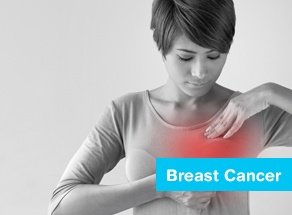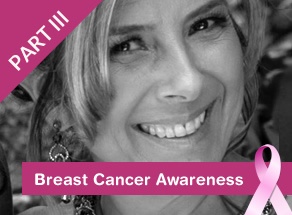Preventive Care
Genetic Tests May Miss BRCA Mutations in Latinas, Study Says
04/09/2015 06:00am | 11706 viewsMany diseases are caused by both genetic and environmental factors, but for many breast and ovarian cancers, mutations in the BRCA genes drastically shift the blame to genetics. Women with these mutations face a five- to 30-fold increased risk of developing such cancers – compared to women without the mutations – and their risk of developing breast cancer can be as high as 85 percent over their lifetime.
Preventive Care
The Cards you are Dealt: Survivor Story, Part 1
02/09/2015 10:08am | 9802 viewsAs a child and young woman my family never discussed cancer; maybe we were fortunate not to have had a reason to or just simply it was the belief that if you do not discuss cancer you won’t get it. The only illnesses discussed were the heart-attacks my grandmother claimed we gave her every time my sisters and I did something to annoy her. When I mentioned to my mother that I had discovered a hard spot on my breast, she said, “Yeah, it is probably from breast -feeding, not letting your milk dry out right.” Several years, many biopsies, and several opinions later the once benign breast lump was diagnosed as stage 2 breast cancer.
Preventive Care
Why Ignoring a Lump Can Cost You Your Life
26/08/2015 01:20pm | 8512 viewsWhen my friend’s mother was diagnosed with breast cancer, it had already progressed to stage 3. The year before, her husband had a died of liver cancer, and she later revealed to her family that her doctors had found a lump in her breast but since she was so overwhelmed with grief, she didn’t have time to deal with it.
Preventive Care
Breast Cancer: You May Never Know Until You Ask the Question
07/02/2014 04:48pm | 19548 viewsOne of the coolest things about science is the endless number of questions that can be asked about something, and the resulting pursuit of answers.
When doctors and scientists saw that women in certain families were diagnosed with breast cancer far more often than they’d expect, they looked into whether cancer risk could be inherited. Those questions eventually led to the discovery of two genes in the 1990s — BRCA1 and BRCA2 — that changed how the medical world looks at cancer risk. Inherited mutations in these genes can dramatically increase the chances of developing breast and ovarian cancers.
Preventive Care
Raising Latina Awareness of Breast Cancer Risk and Prevention Means Understanding Their Cultural Values
21/10/2013 10:44am | 11895 viewsDr. Weitzel's multidisciplinary clinical and research program emphasizes the recognition and assessment of people at increased risk for developing cancer because of family cancer history or personal risk factor.
As Hispanics continue their population surge across the U.S., it becomes more and more evident how underserved the community is – whether in business, politics or the media. However, being underserved by the healthcare industry carries higher, often deadly, stakes. For Latinas in particular, there’s one area where we can and should be doing a whole lot more understanding and outreach.





